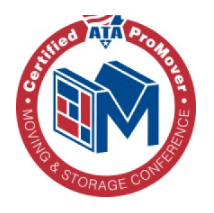Moving Out on $5,000: Can You Afford It?

Moving out on your own is an exciting milestone, but it also comes with significant financial responsibilities. One of the most common questions people ask when considering this big step is, “Is $5,000 enough to move out?”
The answer depends on various factors, such as your location, lifestyle, and personal circumstances. While $5,000 can be a good starting point, it’s crucial to have a clear understanding of the costs associated with moving out and living independently.
To determine if $5,000 is sufficient, you’ll need to consider several key aspects:
- The cost of living in your desired area
- Upfront moving expenses
- Ongoing monthly bills
Additionally, it’s essential to:
- Assess your current financial situation
- Develop a comprehensive budget
- Explore strategies to make moving out more affordable
By diving into these factors, you’ll be able to make an informed decision about whether $5,000 is enough for you to take the leap into independent living. With a better understanding of what it takes to move out successfully, you can create a personalized plan to achieve your goal of financial independence.
How Much Should You Save Before Moving Out?
Moving out requires careful financial planning, and the amount you should save depends on various factors including your location, lifestyle, and income. Generally, you should aim to save at least 3-6 months of living expenses before moving out, which typically ranges from $3,000 to $10,000 for most situations.
The recommended savings can be broken down into three main categories: upfront costs, emergency fund, and ongoing expenses buffer. Upfront costs usually include first and last month’s rent, security deposit, and moving expenses. Your emergency fund should cover 3-4 months of basic living expenses. The ongoing expenses buffer helps manage unexpected costs during your transition period.
Consider your specific circumstances when determining your savings goal. In expensive urban areas, you might need to save more, while smaller towns may require less. Factor in whether you’ll have roommates, as this can significantly reduce your required savings.
Minimum Savings Breakdown
Your minimum savings should typically include:
– First month’s rent and security deposit (usually 1-2 months’ rent)
– Moving expenses ($500-1,500)
– Basic furniture and supplies ($1,000-3,000)
– Emergency fund (3 months of expenses)
– Buffer for unexpected costs ($500-1,000)
How Much Should You Save Before Moving Out?

Before deciding whether $5,000 is enough to move out, it’s crucial to assess your current financial situation. This involves evaluating your income and savings, understanding your existing expenses, and identifying areas where you can potentially reduce costs.
Evaluating Your Income And Savings
Determining Your Monthly Income
Start by calculating your monthly income from all sources, including your primary job, side hustles, and any other regular income streams. This will give you a clear idea of how much money you have coming in each month, which is essential for creating a budget and determining if $5,000 is sufficient for moving out.
Assessing Your Current Savings
Next, take a close look at your current savings. Consider any money you have set aside in bank accounts, investment portfolios, or emergency funds.
Determine how much of your savings you’re willing to allocate towards moving out expenses, such as rental deposits, furniture purchases, and other upfront costs.
Considering Potential Additional Income Sources
If your current income and savings don’t seem sufficient for moving out, consider exploring potential additional income sources. This could include taking on a part-time job, freelancing, or starting a side business.
Even a small boost in income can make a significant difference in your ability to afford living independently.
Understanding Your Existing Expenses
Identifying Essential Expenses
To determine if $5,000 is enough to move out, you must have a clear understanding of your existing expenses. Start by identifying your essential expenses, such as:
- Rent
- Utilities
- Groceries
- Transportation
- Healthcare costs
These are the non-negotiable expenses that you must account for in your budget.
Recognizing Non-Essential Expenses
Next, take a look at your non-essential expenses, such as entertainment, dining out, subscriptions, and shopping. While these expenses can add enjoyment to your life, they may need to be reduced or eliminated when moving out on a tight budget.
Recognizing which expenses are non-essential will help you prioritize your spending and determine if $5,000 is sufficient.
Exploring Areas For Cost Reduction
Finally, explore areas where you can potentially reduce your existing expenses. This could include:
- Cutting back on subscription services
- Finding more affordable alternatives for groceries and household items
- Negotiating better rates for services like insurance and phone plans
By identifying areas for cost reduction, you can free up more money to put towards moving out expenses and ongoing living costs.
Calculating The Cost Of Moving Out
Once you have a clear understanding of your current financial situation, the next step is to calculate the cost of moving out. This involves estimating rent or mortgage payments, accounting for upfront moving expenses, and planning for ongoing living expenses.
Estimating Rent Or Mortgage Payments
Researching Average Rent Prices In Your Desired Location
- Start by researching the average rent prices in your desired location. Websites like Zillow, Apartments.com, and Rent.com can provide valuable insights into rental prices in your area.
Considering The Size And Type Of Accommodation
- Consider the size and type of accommodation that best suits your needs and budget. Studio apartments, shared living arrangements, and renting a room in a house are often more affordable options compared to one-bedroom apartments or single-family homes.
Factoring In Potential Mortgage Costs
- If you’re considering purchasing a home instead of renting, factor in potential mortgage costs. Keep in mind that while owning a home can be a long-term investment, it often requires a larger upfront financial commitment compared to renting.
Accounting For Upfront Moving Expenses
Security Deposits And First Month’s Rent
- When moving into a rental property, you’ll typically need to pay a security deposit and the first month’s rent upfront. Be prepared to allocate a significant portion of your $5,000 budget towards these upfront costs.
Moving Transportation Costs
- Consider the costs associated with physically moving your belongings to your new home. Research the average cost for moving services in your area to determine how much you should budget for transportation costs.
- Using a moving cost estimation tool can also help you plan for these expenses.
Packing Supplies And Equipment
- Don’t forget to account for the cost of packing supplies and equipment, such as boxes, tape, bubble wrap, and furniture pads. Consider purchasing supplies from discount stores or obtaining free boxes from local businesses to save money.
Potential Furniture And Appliance Purchases
- If you’re moving into an unfurnished home or need to replace old furniture, budget for potential furniture and appliance purchases. While you can often find affordable options through second-hand stores, online marketplaces, or discount retailers, these expenses can still take a significant chunk out of your $5,000 budget.
Planning For Ongoing Living Expenses
Utility Costs (Electricity, Water, Gas)
- In addition to rent or mortgage payments, plan for ongoing utility costs such as electricity, water, and gas. Research the average utility costs in your area and factor these expenses into your monthly budget.
Groceries And Household Necessities
- Budget for groceries and household necessities, such as food, cleaning supplies, toiletries, and personal care items. Look for ways to save money on these expenses, such as using coupons, buying in bulk, or opting for generic brands.
Transportation Expenses
- Factor in transportation expenses, such as gas, car maintenance, public transit fares, or ride-sharing costs. If you rely on a personal vehicle, budget for potential repairs and insurance costs.
Internet And Phone Bills
- Don’t forget to account for internet and phone bills in your ongoing living expenses. Research available providers and plans in your area to find the most affordable options that meet your needs.
By thoroughly calculating the cost of moving out, including upfront expenses and ongoing living costs, you can determine if $5,000 is enough to cover your needs. Working with a reputable home moving service can also help you streamline the process and potentially save money on your move.
Developing A Comprehensive Budget
Creating a comprehensive budget is essential for managing your finances effectively when moving out on your own. A well-structured budget helps you allocate your income towards necessary expenses, savings goals, and discretionary spending.
Categorizing Income And Expenses
Fixed Expenses (Rent, Utilities, Subscriptions)
Begin by identifying your fixed expenses, which are costs that remain relatively constant from month to month. These typically include rent or mortgage payments, utilities (such as electricity, water, and gas), and subscriptions (like internet, phone, and streaming services).
Make a list of these expenses and their corresponding amounts to gain a clear understanding of your monthly financial commitments.
Variable Expenses (Groceries, Entertainment, Clothing)
Next, consider your variable expenses, which are costs that fluctuate from month to month based on your consumption and lifestyle choices. These may include groceries, dining out, entertainment, clothing, and personal care items.
Estimate your average monthly spending in each category based on your current habits and anticipated needs in your new living situation.
Savings And Emergency Fund Allocations
Don’t forget to allocate a portion of your income towards savings and an emergency fund. Aim to save at least 10-20% of your monthly income to build a financial safety net and work towards long-term financial goals.
Prioritize building an emergency fund that covers 3-6 months’ worth of living expenses to protect yourself against unexpected events like job loss or medical emergencies.
Adjusting Your Budget Based On Priorities
Identifying Areas For Potential Savings
Once you have a clear picture of your income and expenses, identify areas where you can potentially reduce costs or find savings. This may involve cutting back on discretionary spending, such as dining out or subscription services, or finding more affordable alternatives for necessary expenses like groceries or transportation.
Look for opportunities to negotiate better rates on bills or insurance policies to further optimize your budget.
Prioritizing Essential Expenses
When adjusting your budget, prioritize essential expenses like rent, utilities, and groceries over discretionary spending. Ensure that your basic needs are met before allocating funds towards entertainment or luxury items.
Consider adopting a minimalist lifestyle or embracing frugal habits to stretch your $5,000 further and make the most of your limited resources.
Setting Realistic Financial Goals
Set realistic financial goals that align with your current income and expenses. These goals may include saving for a specific purpose (like a down payment on a car or a vacation), paying off debt, or building a long-term investment portfolio.
Break down your goals into smaller, achievable milestones and adjust your budget accordingly to ensure steady progress towards your objectives.
Maintaining Financial Discipline
Tracking Expenses And Sticking To The Budget
To maintain financial discipline, regularly track your expenses and compare them against your budget. Use budgeting apps, spreadsheets, or a simple notebook to record your spending and monitor your progress.
Hold yourself accountable by setting limits on discretionary spending and avoiding impulse purchases that can derail your budget.
Regularly Reviewing And Adjusting The Budget
Review your budget on a monthly basis to assess your spending habits and identify areas for improvement. Be flexible and willing to adjust your budget as your circumstances change, such as starting a new job, receiving a raise, or facing unexpected expenses.
Regularly reassess your financial goals and priorities to ensure that your budget aligns with your evolving needs and aspirations.
Avoiding Unnecessary Debt And Impulse Purchases
Steer clear of unnecessary debt and impulse purchases that can quickly erode your $5,000 budget. Avoid relying on credit cards to cover everyday expenses and only use them for planned purchases that you can pay off in full each month.
Before making any significant purchases, give yourself a cooling-off period to assess whether the item is truly necessary and aligns with your financial goals.
Exploring Additional Factors And Strategies
When determining if $5,000 is enough to move out, it’s essential to consider additional factors and strategies that can significantly impact your financial situation. These factors include:
- Location and cost of living variations
- Lifestyle adjustments and compromises
- Potential roommate arrangements
- Financial assistance options
By carefully evaluating these aspects and implementing appropriate strategies, you can make the most of your $5,000 budget and increase your chances of a successful transition to independent living.
Considering Location And Cost Of Living Variations
Researching Affordable Cities Or Neighborhoods
The cost of living can vary greatly depending on your location. Research affordable cities or neighborhoods that align with your budget and personal preferences, considering factors such as rent prices, utility costs, and local taxes when comparing different areas.
Evaluating Proximity To Work And Amenities
When choosing a location, evaluate its proximity to your workplace and essential amenities like grocery stores, healthcare facilities, and public transportation. Living closer to work can help you save on transportation costs and reduce commute times, while having easy access to amenities can improve your quality of life and minimize additional expenses.
Assessing Local Economic Conditions
Assess the local economic conditions of potential locations, including job market stability, growth prospects, and average salaries in your field. Moving to an area with a thriving economy and ample job opportunities can provide a more stable foundation for your financial future, even if the initial cost of living is slightly higher.
Additionally, research the price of moving nationwide to factor in potential relocation expenses.
Evaluating Lifestyle Adjustments And Compromises
Downsizing Or Simplifying Living Arrangements
Consider downsizing or simplifying your living arrangements to reduce costs and make your $5,000 budget more manageable. This may involve opting for a smaller apartment, studio, or shared living space rather than a larger, more expensive unit.
Cutting Back On Non-Essential Expenses
Review your current spending habits and identify non-essential expenses that you can cut back on to allocate more funds towards your living costs. Prioritize your spending based on your values and long-term goals, making conscious choices to reduce discretionary expenses without compromising your overall well-being.
Adopting Frugal Habits And Money-Saving Techniques
Embrace frugal habits and money-saving techniques to stretch your $5,000 budget further. Learn to cook meals at home instead of eating out, shop for groceries with a list and compare prices, and take advantage of free or low-cost entertainment options in your area.
Investigating Potential Roommate Arrangements
Sharing Rent And Utility Costs
Consider finding a roommate or exploring shared living arrangements to split rent and utility costs. Sharing a living space can significantly reduce your monthly expenses, allowing you to allocate more of your $5,000 budget towards other essential costs or savings goals.
Dividing Household Responsibilities
When living with roommates, establish a clear division of household responsibilities to ensure a fair and harmonious living arrangement. Discuss and agree upon tasks such as cleaning, grocery shopping, and bill payments to avoid conflicts and maintain a well-functioning household.
Establishing Clear Communication And Boundaries
Foster open and honest communication with your roommates to address any concerns or issues that may arise. Establish clear boundaries regarding personal space, guests, noise levels, and shared belongings to minimize conflicts and maintain a respectful living environment.
Researching Financial Assistance Options
Government Programs And Rental Assistance
Investigate government programs and rental assistance options that may be available in your area. These programs, such as Section 8 housing vouchers or low-income housing tax credits, can help reduce your monthly rent burden and make independent living more affordable.
Student Loans And Scholarships
If you are a student, explore student loan options and scholarships that can help cover living expenses while you pursue your education. Be mindful of loan repayment terms and obligations when considering this option.
Community Resources And Non-Profit Organizations
Seek out community resources and non-profit organizations that offer financial assistance, counseling, or support services for individuals transitioning to independent living. These organizations may provide access to food banks, clothing closets, or discounted household goods, helping you stretch your $5,000 budget further.
By thoroughly exploring these additional factors and strategies, you can make well-informed decisions and create a comprehensive plan for moving out on a $5,000 budget. Remember to remain flexible, adaptable, and proactive in your approach, as your circumstances and financial situation may change over time.
Frequently Asked Questions
- Is $50,000 enough to move out?
$50,000 is generally more than enough to move out comfortably in most areas. This amount would cover initial moving costs, several months of rent, and leave you with a substantial emergency fund. However, the adequacy of this amount depends on your location’s cost of living and your lifestyle expectations.
- Is $6,000 enough to move out?
$6,000 can be enough to move out in areas with moderate cost of living, especially if you’re planning to have roommates or moving to a budget-friendly location. This amount would typically cover first month’s rent, security deposit, basic furniture, and leave some emergency savings, though you’d need to budget carefully and may want to save more for a more comfortable transition.
- How much money should I have saved before I move out?
A good rule of thumb is to have 3-6 months of living expenses saved before moving out, which typically ranges from $3,000 to $10,000 depending on your location and lifestyle. This amount should cover your security deposit, first month’s rent, moving costs, basic furniture, and provide an emergency fund buffer.
- What is the recommended percentage of income to spend on rent?
Financial experts generally recommend spending no more than 30% of your gross monthly income on rent. However, in high-cost areas, this percentage may be higher, and you may need to adjust your budget accordingly.
- How much should I save for an emergency fund before moving out?
Before moving out, it’s crucial to have an emergency fund to cover unexpected expenses. Aim to save at least three to six months’ worth of living expenses, including rent, utilities, food, and transportation costs.
- Is it better to rent or buy when moving out for the first time?
When moving out for the first time, it’s generally recommended to rent rather than buy. Renting offers more flexibility, requires less upfront capital, and allows you to explore different neighborhoods and living arrangements without long-term commitments.
- What are some ways to reduce moving expenses?
To reduce moving expenses, consider the following tips:
- Declutter and sell unwanted items to minimize the amount of belongings you need to move.
- Compare prices from multiple moving companies or truck rental services to find the best deal.
- Ask friends and family for help with packing and loading to avoid hiring professional movers.
- Use free or low-cost packing materials, such as recycled boxes, newspapers, and towels.
- Choose a move date during off-peak seasons or midweek to potentially secure lower rates.
- How can I prepare for unexpected expenses after moving out?
To prepare for unexpected expenses after moving out:
- Build and maintain an emergency fund covering three to six months’ worth of living expenses.
- Create a detailed budget and track your spending to identify areas where you can cut back or save.
- Consider purchasing renters insurance to protect your belongings and liability in case of accidents or damages.
- Research and compare prices for essential services, such as utilities and internet, to find the best deals.
- Set aside a portion of your income each month for unexpected expenses or repairs.
By following these tips and maintaining financial discipline, you’ll be better prepared to handle unexpected expenses and maintain financial stability after moving out.
Conclusion
Determining whether $5,000 is enough to move out depends on a variety of factors, including your location, lifestyle, and personal financial situation. While this amount can serve as a good starting point, it’s essential to conduct thorough financial planning, create a comprehensive budget, and consider your unique circumstances before making the leap.
To make an informed decision:
- Assess your current income and expenses
- Calculate the costs associated with moving out
- Develop a realistic budget that accounts for both upfront and ongoing expenses
Additionally, explore strategies to reduce costs, such as:
- Finding a roommate
- Choosing an affordable location
- Adjusting your lifestyle
Moving out is a significant milestone that requires careful planning and preparation. With dedication, discipline, and a clear understanding of your financial situation, you’ll be well-equipped to make the right decision for your future.
Related Articles
Where to Move from Texas: Top 10 States for Ex-Texans in 2025

Where to Move from Texas: Top 10 States for Ex-Texans in 2025 Record numbers of Texans are exploring life beyond state lines, driven by soaring housing costs, evolving career landscapes, and the search for new lifestyle opportunities. The decision to leave Texas stirs intense emotions – after all, the Lone Star State‘s unique culture and […]
Read MoreHow to Move a House from One Location to Another: Planning to Completion

Relocating an entire house might seem like something out of a movie, but this remarkable feat of engineering happens more often than you’d think. From preserving historic mansions to saving beloved family homes from coastal erosion, house moving represents the intersection of cutting-edge engineering and practical problem-solving. With project costs typically ranging from $18,000 to […]
Read More




